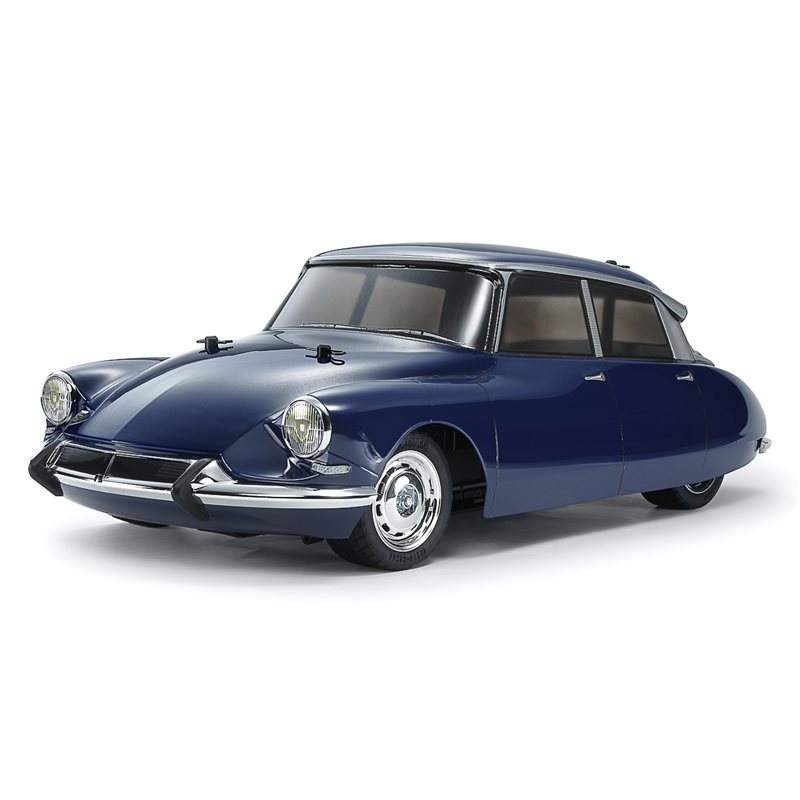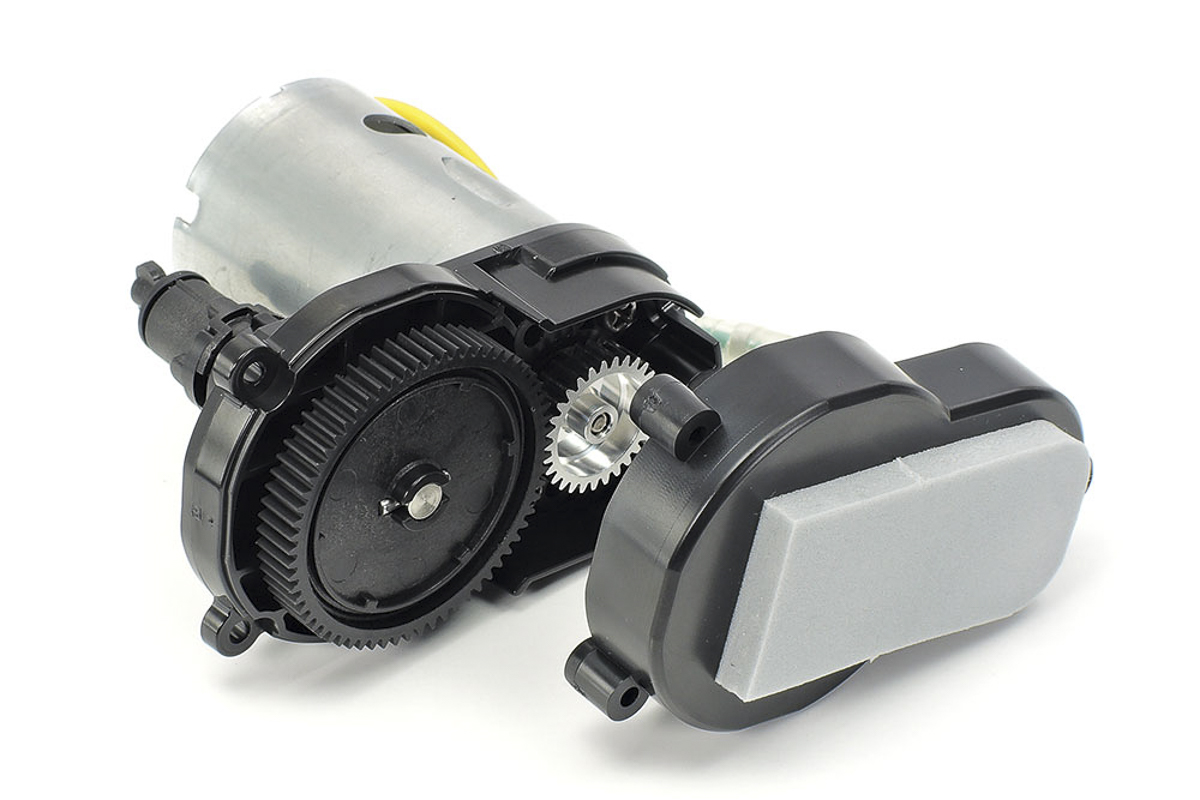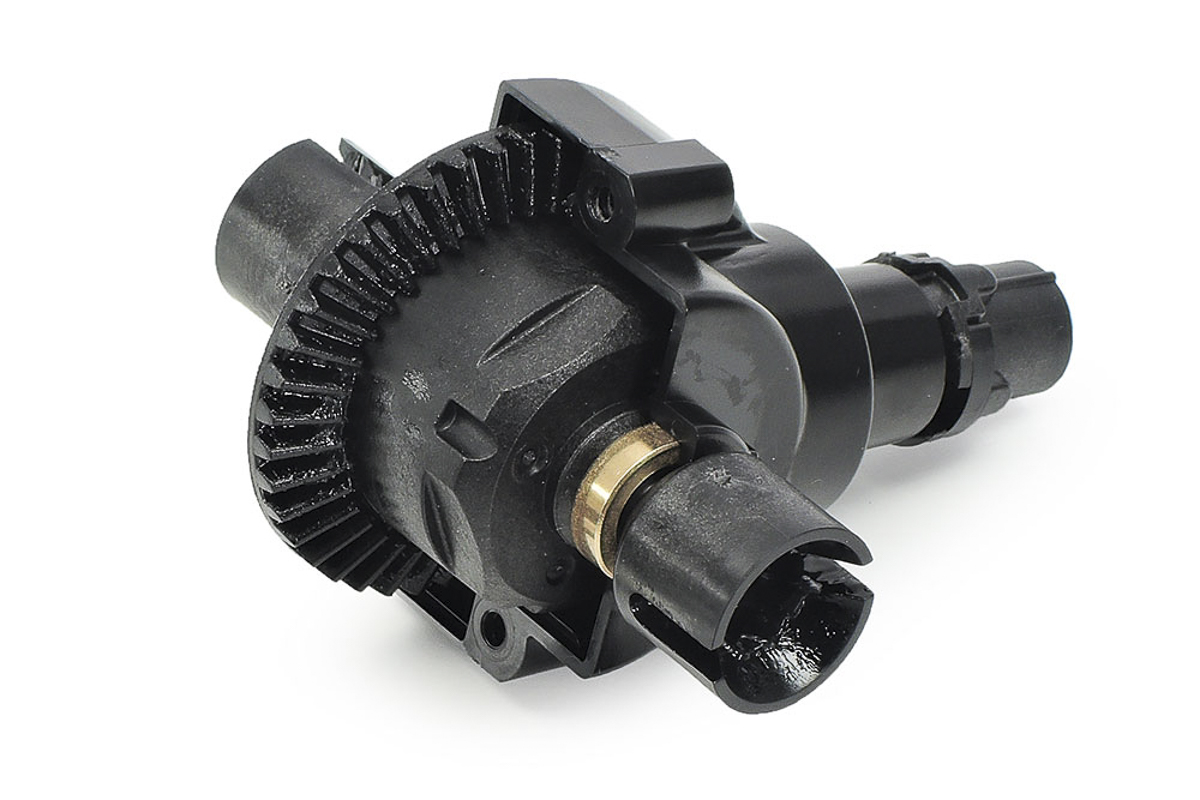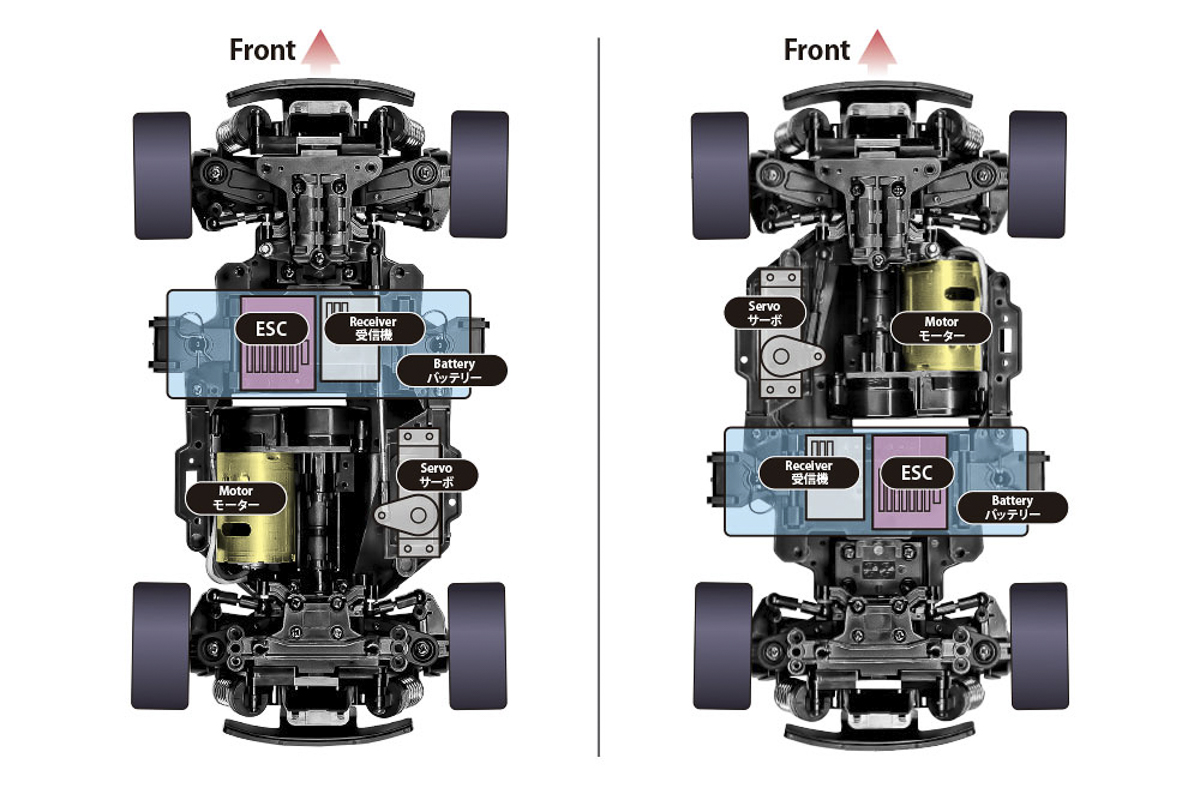



Tamiya welcomes another R/C kit using the MB-01 chassis – this time, long wheelbase and front motor / front wheel drive (FF).
This R/C kit recreates the Citroën DS which made its debut in 1955 and caught people’s attention with its innovative structure and style. Over 1,450,000 were sold up to 1975, and it became one of the betterknown cars of the 20th century. This car was used as the official car for the President of France, and achieved the overall championship in 1966 global rallies. This kit recreates the early-period model featuring two rounded headlights.
About the Model
• This is a 1/10 scale R/C model assembly kit. Length: 419mm, width: 198mm, height: 137mm. Wheelbase: 239mm (Long wheelbase).
• The form of the Citroën DS is recreated in lightweight polycarbonate. Just like the actual vehicle, front tread is wider than the rear tread.
• Features 60mm front and rear tires. Use 60D tires when changing tires.
 |
 |
 |
| A look from the back really shows off the elegant, sloping form of the car and its tail. | A closer look at the wedge-shaped nose, which has a metal-plated bumper part. | Roof rear lamps are another charming feature of the unique DS body. |
 |
 |
 |
| The rear bumper is also metal-plated, and stickers are used for combination lamps and the Citroën emblem. | Plated dish wheels are paired with treaded 60D radial tires. | The compact MB-01 chassis. For this model, it is assembled with a long wheelbase (239mm) and given wide front tread. |
The compact, 2WD MB-01 chassis gives a choice of three types of wheelbase, and front- or rear- wheel drive system. Without removing battery pack, motor and R/C equipment setups from the center frame, simply change attachment directions of final gears and steering linkage to switch between front- and rear-wheel drive; low or high motor position can be chosen for rear-wheel drive cars. The 4-wheel double wishbone suspension features symmetrical structure and friction dampers. Unitized sections such as motor mount, final gears and suspension facilitate ease of assembly and effective maintenance.
 |
 |
 |
| The servo is installed in the right-rear of the model and moves the steering linkage via a link rod. | The four-wheel double wishbone suspension uses symmetrical arms. | Coil sprung dampers come as standard, although you can upgrade them with M-Chassis aluminum dampers if you wish. |
 |
 |
 |
| The motor mount is assembled as a unit and secured to the chassis using two screws. | The 4-bevel gear differential is the same as that on the TT-02; this chassis is compatible with TT-02 Hop-Up Option differentials. | This versatile chassis can be assembled into three wheelbases and two drivetrain layouts.. |
Enhance your RC experience with top-tier components designed to improve performance, durability, and customization. Whether you"re looking for precision handling, upgraded power, or stylish aesthetics, our selection of option parts offers everything you need.
Discover the best upgrades to unlock the full potential of your MB-01 chassis today!
Please note, this version is without Radio, we recommend the RC set from Mstyle.
The Citroën DS, pronounced in French as "Déesse," which means "goddess," is an iconic car that revolutionized automotive design and engineering when it was introduced in 1955. Here are some key aspects and features of the Citroën DS:
Innovative Design: The Citroën DS was designed by Italian sculptor and industrial designer Flaminio Bertoni and French aeronautical engineer André Lefèbvre. Its futuristic and aerodynamic design was truly ahead of its time. The car featured a sleek and streamlined body with a distinctive shape that set it apart from other cars of its era.
Hydropneumatic Suspension: One of the most revolutionary aspects of the Citroën DS was its hydropneumatic self-leveling suspension system. Developed by Citroën engineer Paul Magès, this system used hydraulic fluid and nitrogen gas to provide a smooth and comfortable ride, regardless of the road surface. The suspension could adjust its ride height automatically, allowing the DS to maintain a consistent level regardless of the load or road conditions.
Technological Features: The Citroën DS was packed with innovative technological features for its time. In addition to the hydropneumatic suspension, it also featured power steering, power-assisted brakes, and a semi-automatic transmission known as the "Citromatic" or "DS semi-automatic." These features combined to offer a driving experience that was unmatched by most other cars of the 1950s and 1960s.
Safety: The DS was designed with a strong focus on safety. Its unique body shape and construction provided excellent crash protection for occupants. Additionally, the car"s advanced suspension system contributed to its stability and handling characteristics, enhancing overall safety on the road.
Cultural Impact: The Citroën DS became an instant icon and a symbol of French automotive innovation and style. It was embraced by celebrities, intellectuals, and politicians alike, further cementing its status as a cultural icon. The car appeared in numerous films and works of art, further contributing to its legendary status.
Production and Legacy: The Citroën DS was produced from 1955 to 1975, with various models and updates introduced over the years. It remains highly regarded by automotive enthusiasts and collectors for its groundbreaking design, technological innovation, and timeless style. Today, well-maintained examples of the Citroën DS are sought after by collectors and can command premium prices on the classic car market.
Overall, the Citroën DS is celebrated as one of the most innovative and influential cars in automotive history, and its legacy continues to inspire designers and engineers to this day.